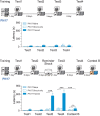Infantile Amnesia: A Critical Period of Learning to Learn and Remember
- PMID: 28615475
- PMCID: PMC5473198
- DOI: 10.1523/JNEUROSCI.0324-17.2017
Infantile Amnesia: A Critical Period of Learning to Learn and Remember
Abstract
Infantile amnesia, the inability of adults to recollect early episodic memories, is associated with the rapid forgetting that occurs in childhood. It has been suggested that infantile amnesia is due to the underdevelopment of the infant brain, which would preclude memory consolidation, or to deficits in memory retrieval. Although early memories are inaccessible to adults, early-life events, such as neglect or aversive experiences, can greatly impact adult behavior and may predispose individuals to various psychopathologies. It remains unclear how a brain that rapidly forgets, or is not yet able to form long-term memories, can exert such a long-lasting and important influence. Here, with a particular focus on the hippocampal memory system, we review the literature and discuss new evidence obtained in rats that illuminates the paradox of infantile amnesia. We propose that infantile amnesia reflects a developmental critical period during which the learning system is learning how to learn and remember.
Copyright © 2017 the authors 0270-6474/17/375783-13$15.00/0.
Figures



References
Publication types
MeSH terms
Grants and funding
LinkOut - more resources
Full Text Sources
Other Literature Sources
